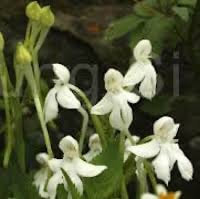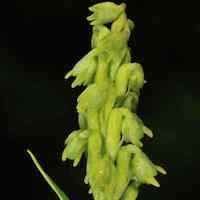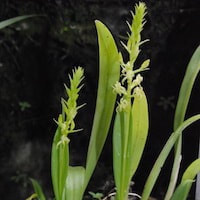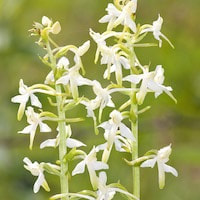MC9- Men's Citrus 9 - To Peach or not to Peach
|
Native Singaporean Orchid notes: Cattleya (Laeliocattleya) Aloha Case coerulea
The Cattleya (Laeliocattleya) Aloha Case coerulea is a simple-to-grow hybrid with Cattleya walkeriana as one of its parents. Like C. walkeriana, it stays small, making it great for growing. It has big, sweet-smelling flowers, but unlike the usual pinks or purples, this one blooms in stunning blue shades. Its compact size, large flowers, and beautiful blue colors make it a lovely choice for adding fragrance to any collection.
|
Therapeutic Orchid notes:
|
Habenaria longicorniculata J Graham Syn. Habenaria longecalcarata A. Rich.
The Habenaria longicorniculata, known as Devasunda in India, Kozhikilangu in Tamil, and Oze-no-sawa-tombo in Japan, is a terrestrial orchid. It blooms from July to September in the Western Ghats and August to November in Tamil Nadu, thriving at elevations from 800 to 1900 meters. It's also found in places like Orissa and Bihar. Locally, it's used by Natti Vaidyas to treat scrotal enlargement, pain, swelling, and leukoderma with a turmeric paste. |
|
Herminium monorchis (L.) R. Br.
The Liparis cespitosa, also known as Jiaopan Lan or Rentouqi in Chinese medicine, is a terrestrial orchid that blooms from June to September. It spreads through two tubers each season: one grows leaves and flowers the next year, while the other forms a new plant. It thrives in moist areas across temperate Eurasia, including Japan, Korea, China, Russia, Europe, and the Himalayas. Used in herbal medicine, it's known to enrich yin, benefitting kidney and stomach health, regulating menstruation, and treating conditions like insomnia and constipation. |
|
Liparis cespitosa (Lam.) Lindl.
The Platanthera bifolia orchid, known as Xiaohuayanger Suan or Shisuantou in Chinese, blooms in September, January, and March in Sri Lanka. It's found across East Africa, the Himalayan foothills, southern China, Southeast Asia, and the Pacific Islands. In Taiwan, the whole plant is used medicinally to treat fever and detoxify the body. Traditional Chinese Medicine values its cooling properties for stopping bleeding and cooling the blood, incorporated into various remedies. |
|
Platanthera bifolia (L.) Rich.
The orchid, known as Nattviole in Scandinavia, Waldhyazinthe in Germany, and Xijushechun Lan in China, is notable for its chemical makeup. It contains loroglossin, a phenolic glycoside, and phytoalexin. Its leaves feature quercetin and kaempferol flavonols. This orchid emits a delightful floral fragrance that attracts the silver moth (Autographa gamma), thanks to compounds like benzyl benzoate and cinnamyl alcohol. In Turkey and Iran, it's used to make salep, a traditional herbal drink and culinary ingredient from dried orchid tubers. |
Other scent note
Scentopia Library Reference ingredient
Lemongrass - Check details at Scentopia's scent library
Download the guided mediation that works best with this Orchid fragrance oil
| men_citrus_essential_oil_orchi_00009.mp3 | |
| File Size: | 115217 kb |
| File Type: | mp3 |




